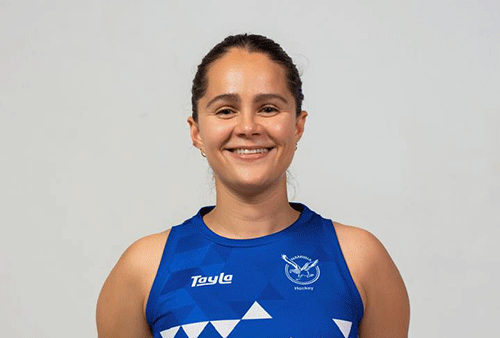Namibia’s women’s national indoor hockey captain, Gillian Hermanus, shared her thoughts on the team’s remarkable performance at the Indoor Hockey World Cup held in Croatia in February. The team had an impressive performance in Croatia.
They achieved their best-ever finish at the tournament, reaching the quarter-finals. Their goal was to finish in the top two of their pool, which they successfully did. However, their journey ended in the knockout stage after a tough match against Austria. Despite this, the team showcased proved they can compete against the world’s best teams.
In an exclusive interview with New Era, Hermanus spoke about the lessons learned, the challenges faced, and the future of indoor hockey in Namibia.
How would you summarise Namibia’s overall performance at the Indoor Hockey World Cup?
I can’t speak on behalf of the men’s team, but as far as the women’s team is concerned, we are extremely proud to have achieved the highest-ever finish for Namibia at an indoor World Cup. This achievement is a testament to the indoor hockey development programmes run in Namibia. Our goal was to finish in the top two of our pool, which we achieved. Although we did not progress to the semi-finals, reaching the quarter-finals was still a significant milestone. The team demonstrated immense resilience throughout the tournament.
What were some of the key lessons the team learned from competing at this level?
Despite some results not going our way, we learned that we can compete with the best in the world.
Which match do you think was the most challenging, and why?
The quarter-final against Austria was our toughest match. Playing against European teams is always a challenge, but the fact that it was a knockout game added even more pressure.
What were the standout moments for you personally during the tournament?
For me, the standout moments were when my teammates achieved their individual goals. Those moments will always stay with me.
Namibia played against some of the world’s best teams—what was it like facing such high-level competition?
It showed us what we were up against and proved that we can compete at that level.
What areas do you feel the team needs to improve on after this experience?
We need to improve on conditioning and mastering the basics.
How would you rate the overall organisation of the Indoor World Cup?
It was well-organised with friendly staff. There was nothing to complain about.
As the captain, how did you motivate your teammates throughout the competition?
I didn’t need to do much motivating. We are a group of women who do not need external motivation because we take immense pride in competing for our country.
How do you handle the pressure of leading the national team in high-stakes tournaments?
Having a good support system, including family, friends, coaches, and managers, helps a lot. Also, I make sure not to place my identity solely in the sport.
What are the next steps for the team after this World Cup performance?
We are now focusing on recruiting and building the next group of players for the next World Cup in four years.
How do you see the future of indoor hockey developing in Namibia?
If the development programs continue, indoor hockey will grow immensely. One of the advantages is that we only need 12 players per team, which is ideal for a country with a small population like Namibia.
What is the biggest challenge Namibia faces in improving women’s hockey at the international level?
The biggest challenge is international experience. Apart from the World Cup, we have played against South Africa and recently competed in Croatia and Malaysia. However, this is not enough to maintain a baseline level of experience required to compete at a World Cup.
How important is sponsorship and investment in ensuring the continued growth of hockey in Namibia?
Sponsorship and investment are extremely important. Experience is key to success in sports, and it is crucial that both the national teams and youth players have access to opportunities that allow them to gain valuable experience.


